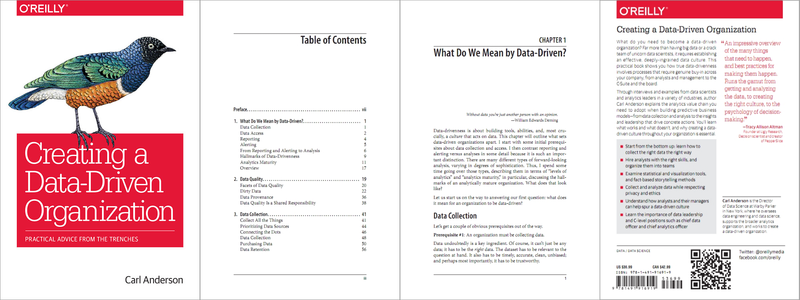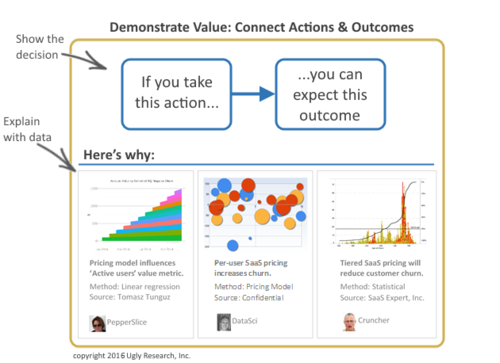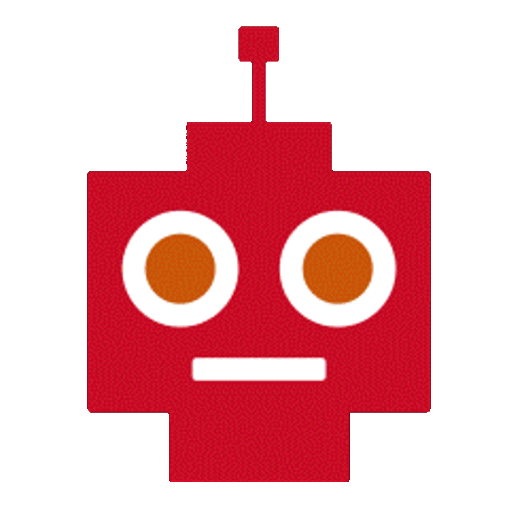
1. SPOTLIGHT: Warby Parker data scientist on creating data-driven organizations. What does it take to become a data-driven organization? “Far more than having big data or a crack team of unicorn data scientists, it requires establishing an effective, deeply ingrained data culture,” says Carl Anderson. In his recent O’Reilly book Creating a Data-Driven Organization, he explains how to build the analytics value chain required for valuable, predictive business models: From data collection and analysis to insights and leadership that drive concrete actions. Follow him @LeapingLlamas.
Practical advice, in a conversational style, is combined with references and examples from the management literature. The book is an excellent resource for real-world examples and highlights of current management research. The chapter on creating the right culture is a good reminder that leadership and transparency are must-haves.


Although the scope is quite ambitious, Anderson offers thoughtful organization, hitting the highlights without an overwhelmingly lengthy literature survey. Ugly Research is delighted to be mentioned in the decision-making chapter (page 196 in the hard copy, page 212 in the pdf download). As shown here, PepperSlice provides a simple way to present evidence to decision makers in the context of a specific ‘action-outcome’ prediction or particular decision step.
Devil’s advocate point of view. Becoming ‘data-driven’ is context sensitive, no doubt. The author is Director of Data Science at Warby Parker, so unsurprisingly the emphasis is technologies that enable data-gathering for consumer marketing. While it does address several management and leadership issues, such as selling a data-driven idea internally, the book primarily addresses the perspective of someone two or three degrees of freedom from the data; a senior executive working with an old-style C-Suite would likely need to take additional steps to fill the gaps. The book isn’t so much about how to make decisions, as about how to create an environment where decision makers are open to new ideas, and to testing those ideas with data-driven insights. Because without ideas and evidence, what’s the point of a good decision process?
2. People management needs prescriptive analytics. There are three types of analytics: descriptive (showing what already happened), predictive (predicting what will happen), and prescriptive (delivering recommended actions to produce optimal results). For HR, this might mean answering “What is our staff retention? What retention is expected for 2016? And more importantly, what concrete steps will improve staff retention for this year?” While smart analytics power many of our interactions as consumers, it is still unusual to get specific business recommendations from enterprise applications. That is changing. Thanks @ISpeakAnalytics.
3. Algorithms need managers, too. Leave it to the machines, and they’ll optimize on click-through rates ’til kingdom come – even if customer satisfaction takes a nose dive. That’s why people must actively manage marketing algorithms, explain analytics experts in the latest Harvard Business Review.
4. Nonreligious children are more generous? Evidence shows religion doesn’t make kids more generous or altruistic. The LA Times reports a series of experiments suggests that children who grow up in nonreligious homes are more generous and altruistic than those from observant families. Thanks @VivooshkaC.
5. Housing-based welfare strategies do not work, and will not work. So says evidence from LSE research, discussing failures of asset-based welfare.
Posted by Tracy Allison Altman on 4-Sept-2016.








